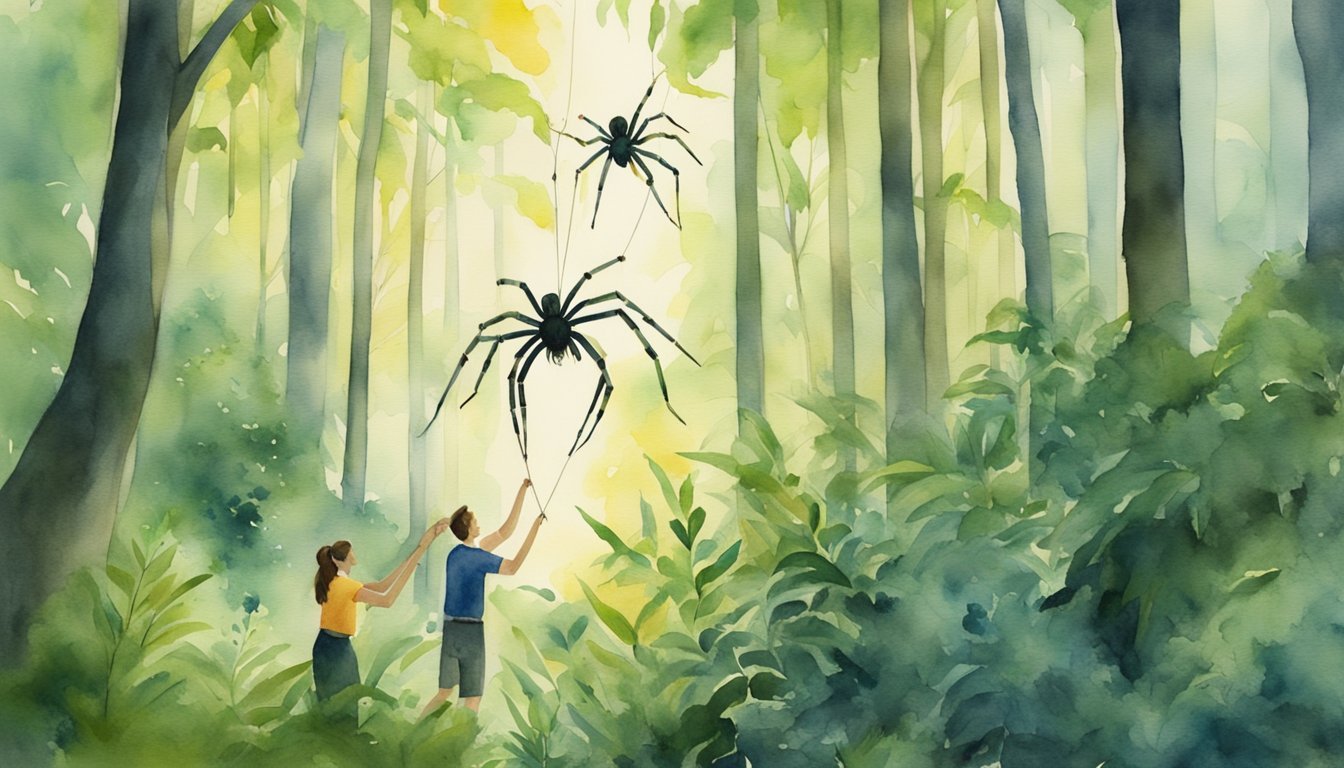Understanding Big Spiders
Big spiders vary greatly in terms of species, habitats, sizes, and behaviors. This section delves into specific details about these fascinating arachnids, providing insights into their diverse world.
Species and Habitat
Spiders belong to the class Arachnida and are found in a wide range of environments. The Goliath birdeater (Theraphosa blondi) holds the title for the world’s largest spider by mass and is native to South America. In contrast, the giant huntsman spider (Heteropoda maxima), known for the largest leg span, resides in Asia. Other noteworthy species include the Brazilian salmon pink birdeater (Lasiodora parahybana) and the Hercules baboon spider, which are among the heftiest tarantula species.
Size and Appearance
Sizes among these impressive spiders can vary, but the Goliath birdeater‘s leg span can reach up to 12 inches, and it weighs around 6.2 ounces. Appearance wise, spiders like the giant house spider have long legs and a formidable size. The Brazilian giant tawny red tarantula also boasts a significant size, with vibrant coloration that distinguishes it from others.
Behavior and Diet
These spiders exhibit a range of behaviors from the Brazilian wandering spider, noted for its aggressive nature, to the more docile tarantulas that are often kept as pets. The diet of these large spiders typically includes insects, but some, like the bird-eater tarantulas, can consume larger prey such as lizards and bird chicks. The Brazilian wandering spider is an example of a spider with a potent venom and is considered one of the most venomous spiders in the world.
Human Interactions and Conservation

The interactions between humans and large spiders are significant in shaping both public perception and conservation efforts. Understanding these encounters, the possibility of keeping them as pets, and the role of research and education can deepen our appreciation and support for these fascinating arachnids.
Encounters and Safety
When humans encounter large spiders, safety concerns often arise due to their bite and venom. While some spiders possess venom potent enough to subdue their prey, most large spiders are not harmful to humans. Instances of aggression can occur, usually in the context of mating or when they feel threatened. Education on spider behavior, such as identifying signs of distress like stridulation or raised abdomens, can prevent bites.
Big Spiders as Pets
Choosing a large spider as a pet requires understanding their needs, such as appropriate enclosure size to accommodate their webs or nocturnal hunting activity. Some species are quite docile and may become popular among enthusiasts for their unique behaviors and the ease of feeding them prey, like crickets. However, potential pet owners must consider their quick speed and handling sensitivities to ensure proper care.
Research and Education
Scientists play a crucial role in unveiling the natural history and ecological importance of large spiders. Research, often conducted at institutions like natural history museums, contributes to our knowledge of spider mating habits, egg laying, and environmental roles. Public science events and educational programs can elucidate the misunderstood aspects of spider life, fostering greater appreciation and support for their conservation.

